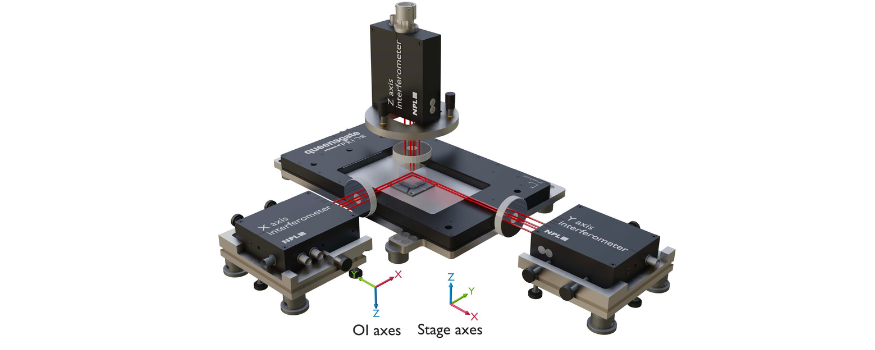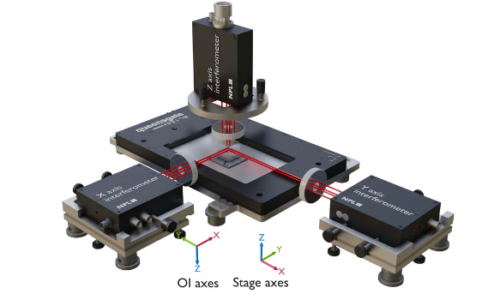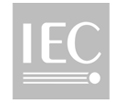New research paper available
As part of the Analysis for Innovators program round 6, Queensgate, in collaboration with the National Physical Laboratory (NPL), were awarded funding for a project to investigate parasitic motion/off-axis errors in multi-axis nanopositioning stages, and develop a unique and practical correction methodology.
All moving systems have a certain amount of unwanted motion and, for any multi-axis piezo driven stage, this will result in off-axis positioning errors which limits the accuracy of the stages. Although the linearity and accuracy specifications for nanopositioning stages are stated for each axis, these errors are compounded across the entire multi-axis movement space.
Using NPL’s multi-axis interferometric instrumentation together with autocollimation, the spatial errors of two Queensgate stages were characterized over a series of tests. From these detailed experiments, NPL and Queensgate engineers developed correction algorithms for three-dimensional linear motion.
As a result of this work, the performance of the Queensgate large range multi-axis stages (600x600x600µm) are comparable to that of high performance shorter range nanopositioning stages suitable for surface characterization. The option to provide Spatial correction on Queensgate multiaxis stages will provide market leading performance in XYZ and XY nanopositioning. This will benefit high-precision applications, such as atomic force microscopy (AFM) and enable the use of longer travel ranges.
Full details of the research are available in a paper previously presented at ASPE and EUSPEN:
Spatial positioning correction for multi-axis nanopositioning stages – Paper by NPL and Queensgate














